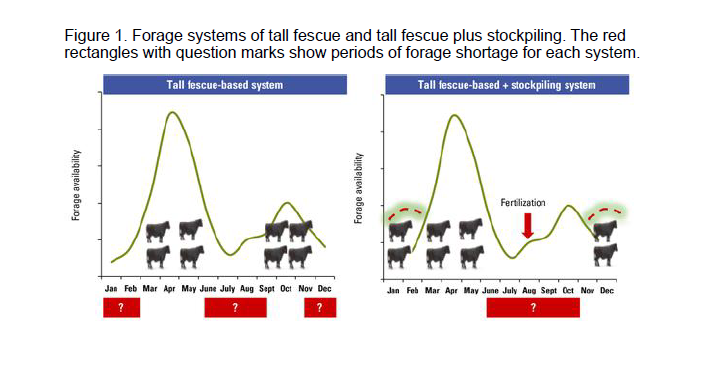Stockpiling Tall Fescue
go.ncsu.edu/readext?1087956
en Español / em Português
El inglés es el idioma de control de esta página. En la medida en que haya algún conflicto entre la traducción al inglés y la traducción, el inglés prevalece.
Al hacer clic en el enlace de traducción se activa un servicio de traducción gratuito para convertir la página al español. Al igual que con cualquier traducción por Internet, la conversión no es sensible al contexto y puede que no traduzca el texto en su significado original. NC State Extension no garantiza la exactitud del texto traducido. Por favor, tenga en cuenta que algunas aplicaciones y/o servicios pueden no funcionar como se espera cuando se traducen.
Português
Inglês é o idioma de controle desta página. Na medida que haja algum conflito entre o texto original em Inglês e a tradução, o Inglês prevalece.
Ao clicar no link de tradução, um serviço gratuito de tradução será ativado para converter a página para o Português. Como em qualquer tradução pela internet, a conversão não é sensivel ao contexto e pode não ocorrer a tradução para o significado orginal. O serviço de Extensão da Carolina do Norte (NC State Extension) não garante a exatidão do texto traduzido. Por favor, observe que algumas funções ou serviços podem não funcionar como esperado após a tradução.
English
English is the controlling language of this page. To the extent there is any conflict between the English text and the translation, English controls.
Clicking on the translation link activates a free translation service to convert the page to Spanish. As with any Internet translation, the conversion is not context-sensitive and may not translate the text to its original meaning. NC State Extension does not guarantee the accuracy of the translated text. Please note that some applications and/or services may not function as expected when translated.
Collapse ▲Stockpiling is the practice of letting forage accumulate in the late summer or early fall to delay grazing until the winter months. An on farm research trial shows after applying 54 pounds of nitrogen per acre to pasture around September 1, pastures yielded on average 2,542 pounds of available forage per acre by early December. It should be noted that these farms did the proper prep work in order to achieve these results and that weather/rainfall also affects yield. Pastures were mowed or grazed and then rested during the month of August. Grazing was deferred until December or later. Stockpiled fescue has good nutritive value as it stays vegetative for most of the fall and during this time it has elevated sugar content and good digestibility. Nutrient content is relatively stable over the fall/winter months when stockpiled. Steps to take for stockpiling are listed below.
- Select the pasture in advance.
- It should contain mostly tall fescue with the ideal pH to support forage growth.
- Prep the pasture by grazing/mowing to a height of 3 inches and then close it to grazing.
- The pasture should be rested for at least two weeks before N application; if the pasture was grazed below 3 inches, allow it to rest for four weeks prior to application of N. N fertilization should occur mid August in the mountains and September 1 in the piedmont. Ideally there should be 60 days of regrowth before cool weather sets in and slows forage growth.
- Fertilize the pasture with 50 – 80 lbs. of nitrogen.
- It’s important to consider the cost/type of nitrogen along with the pasture’s ability to produce forage without N supplementation before deciding on application rate.
- Some sources of N, such as urea and urea-based fertilizers, are volatile so they are best utilized if spread right before a rain. If you’ve used animal wastes like poultry litter or have a good rotational system utilizing legumes, you may already have plenty of N cycling in the soil, so N may not be needed in all cases.
- Utilize warm season forages and other pastures while the fescue accumulates. Half an acre of stockpiled fescue should provide 60-90 days of grazing per animal unit.
- It is important to not begin grazing too soon. The ergovaline content of the fescue will decline as winter progresses.
- Begin grazing after December or later, utilizing electric fencing to ensure most effective utilization. Keep an eye on the cattle to ensure they have adequate forage and nutrients.
- Give livestock enough forage for approximately 3 days at a time. Using frontal grazing prevents damage and decay to forage cattle do not need yet; no back stop is needed using this method due to slow rate of regrowth that time of year.
August is the time to start preparing if this is a practice that could work for you and your operation. It is never too early to consider planning for next year!
Sources:
Production and Utilization of Stockpiled Tall Fescue Understanding the Basic Concepts
August is Time to Prepare Fields for stockpiling
Image:
Production and Utilization of Stockpiled Tall Fescue Understanding the Basic Concepts





